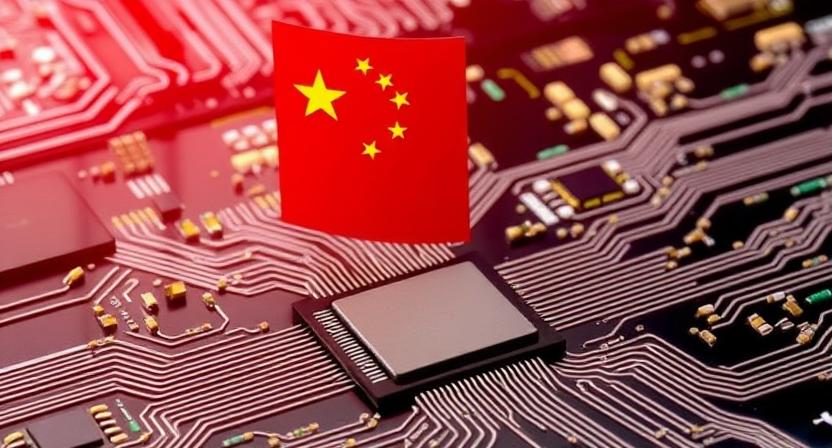
In a bold and strategic decision, China has reduced tariffs on U.S.-made semiconductor products, marking a crucial shift in global trade dynamics. This move is expected to have significant implications for both China’s tech industry and the broader global semiconductor market, enhancing technological innovation and easing trade tensions.
What Does China’s Tariff Reduction Mean for the Semiconductor Industry?
China has cut tariffs on U.S. semiconductor imports, including microchips critical for technologies like artificial intelligence (AI), 5G, and cloud computing. Previously set at 125%, these tariffs have now been slashed to zero, a decision that will have wide-reaching effects on trade and innovation.
For China, this tariff reduction is a strategic step to ensure its technology sector has access to the world’s best semiconductor technology. These chips are vital for China’s expanding digital economy, which includes emerging fields such as AI, robotics, and smart cities.
Why Semiconductors Matter for China’s Tech Sector
Semiconductors are at the heart of modern technology, powering everything from smartphones and computers to electric vehicles and AI systems. For a country like China, which aims to lead in technology and innovation, access to the best semiconductor products is non-negotiable.
China’s technology ambitions are closely tied to its access to high-performance chips. With industries like AI, 5G, and data centers driving the future of China’s economy, securing these advanced components is crucial. By reducing tariffs, China is ensuring its manufacturers can stay competitive globally and continue to innovate.
Global Market Reactions: Positive Outlook for Tech Stocks
The global market has reacted positively to the tariff reduction. Semiconductor stocks, such as those of Nvidia, Intel, and Qualcomm, have seen an uptick as a result of the announcement. The move signals that trade tensions between the U.S. and China might be easing, which has reassured investors.
Moreover, the tariff reduction could lead to more stable supply chains for semiconductor components, which are vital to countless industries worldwide. With smoother trade and reduced costs, both China and U.S. companies are positioned to benefit from more accessible semiconductor technology.
China’s Long-Term Vision: Innovation and Self-Sufficiency
While China continues to invest in domestic semiconductor research and development (R&D), it still relies on U.S. chips for the most advanced technologies. The tariff reduction is part of China’s broader strategy to reduce reliance on foreign suppliers and secure a steady supply of top-tier semiconductors.
However, China’s path to technological self-sufficiency in semiconductor production is a long-term goal. By removing trade barriers, China is balancing the need for foreign technologies while continuing its push for innovation within its own borders. This move fosters collaboration with international partners, ensuring that China’s tech sector remains robust and competitive in the global market.
Implications for U.S.-China Trade Relations
The tariff reduction may also signal a thaw in U.S.-China trade relations. While both countries continue to navigate trade disputes, this move suggests a willingness to engage in more constructive negotiations. The global tech industry will be watching closely, as any shifts in trade policy between the two economic powers could have far-reaching effects on global supply chains and prices.
For U.S. companies, the tariff reduction opens up new opportunities to expand in China, the world’s largest tech market. By fostering more favorable trade conditions, both sides could see increased cooperation that benefits industries on both sides of the Pacific.
The Bigger Picture: China’s Tech Future and Global Competition
China’s move to reduce semiconductor tariffs aligns with its broader goal of becoming a dominant force in global technology. As the digital economy expands, semiconductors will play a key role in powering the next wave of innovation. This tariff reduction ensures that China has access to the resources it needs to build a thriving, competitive tech sector.
However, this development also raises the stakes in the global race for semiconductor dominance. As China continues to invest in its own chip production, the competition between U.S. and Chinese tech companies will intensify. This, in turn, could drive further technological advancements and reshape global trade in the coming years.
Conclusion: A Milestone for Global Trade and Innovation
China’s decision to reduce tariffs on semiconductor products is a critical move that underscores the importance of technology in today’s global economy. By ensuring better access to U.S. semiconductor products, China is positioning itself to strengthen its tech sector and continue its rise as a global tech leader.
The move also signals a potential shift in U.S.-China trade relations, offering the possibility of more cooperation and less trade friction in the future. As both countries continue to navigate complex trade issues, the global semiconductor market will likely feel the effects, leading to a more interconnected and innovative global economy.
stay here for more updates :- marketdarpan.com


